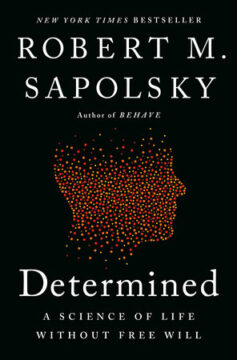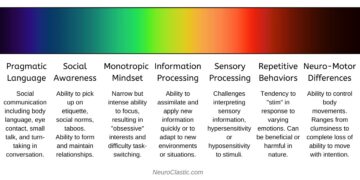At the Italian town of Limone sul Garda.
Political Correctness: How The Few Try To Rule Over The Many
by Thomas R. Wells
 The recent history of the term ‘political correctness’ and its association with the contemporary left and the tedious culture wars obscures its true character and ubiquity. Political correctness is real, significant, and arguably the dominant mode of politics since before humans could even talk. It is the few trying to rule over the many by persuading the many that they are the ones in the minority.
The recent history of the term ‘political correctness’ and its association with the contemporary left and the tedious culture wars obscures its true character and ubiquity. Political correctness is real, significant, and arguably the dominant mode of politics since before humans could even talk. It is the few trying to rule over the many by persuading the many that they are the ones in the minority.
The goal of this form of politics is the manufacturing and maintaining of something called ‘pluralistic ignorance‘ where members of a group mistakenly believe that most other members disagree with them. As a result, a well-positioned minority is able to persuade the group as a whole of the existence of a fictitious shared consensus supporting their rule or values. Taken separately, many individuals may recognise that they don’t agree with what is being done in their name. But at the same time they believe they are the only one (or one of a very few) who think this, and so they go along with the thing they disagree with.
How is this rule of the few established and maintained? It is essential that the majority never realise that their views are in the majority, or they will withdraw the grudging allegiance on which the minority’s precarious rule relies. Therefore on certain issues, silence must fall. By one means or another, members of the majority must be dissuaded from speaking truthfully about what they believe in places where others might hear them, believe them, and say ‘Yes – me too!’ For such a cascade of personal disclosures would quickly unravel the delicate fabric of the fictional consensus. Read more »
Double Feature: The Yakuza (1974) and Nostalghia (1983)
by Derek Neal
 A few days ago I watched The Yakuza (1974), Paul Schrader’s screenwriting debut, and the following day I saw Andrei Tarkovsky’s Nostalghia (1983) at the cinema. These two films would never feature on a double bill together, and yet, due to having watched them within 24 hours of each other, they seem related in my mind, and I can’t help but interpret Nostalghia in light of The Yakuza.
A few days ago I watched The Yakuza (1974), Paul Schrader’s screenwriting debut, and the following day I saw Andrei Tarkovsky’s Nostalghia (1983) at the cinema. These two films would never feature on a double bill together, and yet, due to having watched them within 24 hours of each other, they seem related in my mind, and I can’t help but interpret Nostalghia in light of The Yakuza.
The Yakuza is a sort of Japanese film noir: an ageing American war veteran returns to Tokyo 20 years after leaving to do one last job, but events predictably spiral out of control until they threaten to consume him and everyone he cares about. Ultimately the film is about relationships and what one owes to others, and how this understanding is complicated by differing cultures and a modernizing world. Read more »
Monday, February 26, 2024
Free Will, Pragmatism, and the Things Best Left Unsaid
by David Kordahl
 A few months ago, the Stanford biologist Robert Sapolsky released Determined: A Science of Life Without Free Will. It’s a book whose thesis is as easy to state as it is hard to accept. Sapolsky argues that since our actions result from nothing more than one event following another, no one really deserves praise or blame for anything they do. Our actions are determined by physical events in the physical brain, tightly linked in a causal chain that none of us is able to control any more than anyone else. Our attitudes about all sorts of everyday issues, from financial compensation to prison sentencing, should be reformed in the light of this truth.
A few months ago, the Stanford biologist Robert Sapolsky released Determined: A Science of Life Without Free Will. It’s a book whose thesis is as easy to state as it is hard to accept. Sapolsky argues that since our actions result from nothing more than one event following another, no one really deserves praise or blame for anything they do. Our actions are determined by physical events in the physical brain, tightly linked in a causal chain that none of us is able to control any more than anyone else. Our attitudes about all sorts of everyday issues, from financial compensation to prison sentencing, should be reformed in the light of this truth.
Sapolsky is a witty writer, but notions of agency are so deeply baked into our usual way of talking that he frequently has to catch himself. (From a footnote: “I have to try to go through the same thinking process that this whole book is about to arrive at any thoughts about [Bruno] Bettelheim other than that he was a sick, sadistic fuck.”) While one might turn to Determined for lively discussions about current debates in neuroscience, philosophers who have criticized the book point out that there’s nothing really new in his basic assertion, besides the new details.
Of course, filling in the details can be important for establishing plausibility. But the problem with determinism—at least for scientists since the time of Laplace—isn’t that the idea seems implausible. The problem is that even if determinism is plausible, it’s not clear what the consequences of this realization should be. Read more »
Monday Poem
“The past is inevitable” —Delmore Schwartz, Poet
I’d Never Thought of it Like That

though it’s likely to come, tomorrow’s not set,
…….. this day’s loose ends twist in the wind
………like kite tails in blue jerked at the end of present’s string,
………they’re codas no one can sing—
………the future’s not something on which you should bet
only now sings real arias
if I stand on the bridge in the middle of town
where the river splits in bow waves at abutments
beneath my feet as the bridge’s foot in the stream
becomes a ship’s prow plowing north to nowhere,
the riverskin gives back an early crimson sky,
an oscillating rendition of itself—
in the otherwise slick mirror of the stream below
I catch a glimpse my rippled head in flames
of pleated clouds
I am its aria
as I turn and walk off I get it,
the past is inevitable
and set
Jim Culleny, 12/17/15
Photo: The Bridge of Flowers
by Martin Yaffee
No Sense Of Decency
by Michael Liss
I have here in my hand a list of 205 cases of individuals who would appear to be either card carrying members or certainly loyal to the Communist Party, but who nevertheless are still helping to shape our foreign policy. —Joseph McCarthy, February 9, 1950

Seventy-four years later, that phrase, from Senator Joseph McCarthy’s Wheeling (West Virginia) “Enemies Within” speech, still has the capacity to remind us of an era when America’s faith in its own institutions was challenged almost to the breaking point. It was a time of bullying and blacklists, screaming headlines and wild accusations. “McCarthyism” became the byword for a type of paranoid style in politics where the power of the government is turned on the individual for merely exercising his or her rights.
The speech itself is neither eloquent nor subtle. The former amateur boxer wades in with both fists. It’s likely even built on a lie—there was no list—at least not one McCarthy would let people look at. There was no precise number. There are multiple versions of the speech, some have it at 205, others 57 or 71. McCarthy liked the mystery—part of his peculiar genius was his ability to mangle the truth in a way that left reporters eager for more.
Of its political impact, there can be no question. Wheeling vaulted the relatively unknown (and frankly often disliked) 41-year-old first termer to national prominence, a place he would occupy without pause for most of the next five years. Read more »
Life in a Village
by R. Passov
Summer of ‘22

In a coffee shop a short train ride north of Manhattan along the Hudson River, there’s a vigil. A group, drawn from neighboring villages, is watching a someone slide to their end. Though long in the making, the apparentness is recent – severely distending belly, shrunken arms, swollen legs, gaunt face.
Basi, close to his real name, is a nickname sometimes used. There’s nothing special about him. He’s in his late 60’s with two grown children and well into a long-term suburban marriage, the kind where you stay while doing all you can to get away.
His first coffee shop was across the street from the shop in which he tends his last days. We come by. We sit, we order – double macchiatos in my case, espresso or cappuccinos for others. Basi sits with us, too infirm to move. Thankfully a nice young woman – Julene – patiently works the counter, handling orders along with critiques of her barrister shortcomings.
I’ve decided that Basi is not being mean when he criticizes Julene. Instead he’s treating her as though she’s in a privileged apprenticeship at a struggling Italian coffee shop you’d find on the outskirts of Rome, where Basi spent much of his youth. The kind more likely to be full in afternoons rather then mornings; full of day workers and doctors, lawyers and police officers, conmen and senators coming for their end of day espressos combined with enough bullshit to get them through the night.
That’s what Basi has built over these last 25 years.
Perceptions
Putin’s Second Genocide
by Gunnar Heinsohn (translated by Rafaël Newman)

The past weekend marked the second anniversary of the full-scale Russian invasion of Ukraine on February 24, 2022. The following article originally appeared in German in Die Welt magazine on April 29, 2022. It is posted here in a first-time English translation, with the permission of its author and in his memory, during a period in which the meaning of genocide is being discussed with new urgency.
Following his initial genocide—committed from 1999 to 2009 in Chechnya—Vladimir Putin has now embarked on a second, under the pretext of preventing an alleged genocide of Russians in Eastern Ukraine. A historic first.
Putin evidently sought legal grounds for a war of aggression, and all his experts could come up with was the UN Convention on Genocide. Under article 1, the Convention’s Contracting Parties—147 states, including Russia—are obliged to “prevent” genocide, not merely to punish it. Such a provision does not exist even for the prevention of an ordinary civil war. Putin’s accusation of genocide, leveled at Ukraine, and his strict avoidance of the terms war and invasion, can be explained by the will to embellish his monstrous project.
Like all murders, genocide requires intent and planning. A spontaneous massacre may leave 1,000 dead, but legally speaking it is still a case of mass manslaughter. Premeditated genocide, on the other hand, though it be hindered after “only” 100 people have died, has nevertheless produced 100 victims of genocide. This is a crucial legal distinction. Read more »
Of Death and Watches
by David Winner
All sixth-grade summer, the name of the Greek historian Xenophon pounded in my ears like a minor chord banged upon a piano. I had borrowed a book by him from my father’s shelves but misplaced it in the last days of school. Fearing the wrenching disappointment that accompanied misplaced articles and forgotten tasks, I would slip nervously past the empty space in the bookshelf where Xenophon belonged. An English professor rather than a classicist, he would hardly have need for it, but still might sense its absence like a missing limb.
2021
The night before my father’s last health crisis, Hurricane Ida came to Brooklyn. My wife, Angela, and I heard lightening, wind, distant branches crashing downwards, but next morning’s mild weather made it seem like the storm had underwhelmed.
I was playing with my computer the following morning, waiting for 8:30, the hour at which I had been calling my father each morning since my mother’s death ten years before when the phone rang. 434, my father’s area code, but not his number.
Ninety and frail, he’d been struggling alone in the old house in which I grew up.
“Your dad,” said Rick, the man who drove him around and took care of his yard, “isn’t doing so good. He wants you down here right away.” Read more »
Catspeak
by Brooks Riley

Why Donald Trump Might be a Vampire
by Akim Reinhardt
 What do we know about vampires?
What do we know about vampires?
- They are selfish to a degree that is sociopathic
- They are consumed by vanity
- They roar against anyone who contradicts them
- Their skin is oddly discolored
- They demand sycophantic followers
- All they care about is fucking, feeding, and being complimented
- They are capable of hypnotizing people into ignoring all their horrible vampiric misdeeds
At first glance then, it seems as if Donald Trump might actually be a vampire. But of course the thought is ridiculous. Just the hysterical ramblings of an unmoored Ukraine-supporter. The above is nothing more than a list of random, vague coincidences. Or so I thought. And then I found the following excerpt from Bram Stoker Steve Bannon’s journal.
3 May. Palm Beach.–Left NYC Trump Tower at 8:35 P.M., on 1st May, arriving at Washington, D.C. early next morning; should have arrived at 6:46, but train was an hour late because Amtrak is full of losers. DC seems a wonderful place, from the glimpse which I got of it from the train and the little I could walk through the streets. I feared to go very far from the station, as we had arrived late and there were Democrats everywhere.
The impression I had was that we were leaving the North and entering the South; the most splendid of Confederate monuments over at the Capitol, which are here of noble width and depth, took us among the traditions of Jim Crow rule.
We left in pretty good time, and came after nightfall to Atlanta. Here I stopped for the night at the Waffle House. I had for dinner, or rather supper, a steak done up some way with blood red sauce, which was very good but thirsty. (Mem. get recipe for Melania.) I asked the waiter, and he said it was called “steak well done with ketchup,” and that, as it was Trump’s favorite dish, I should be able to get it anywhere. Read more »
A Soft Landing on the Moon and Cixin Liu’s Three Body Problem
by Leanne Ogasawara

1.
It was the first US lunar landing since 1972, when last Thursday a private Houston-based company successfully touched down in the lunar highlands 185 miles north of the moon’s south pole.
We are told again and again: space is hard.
I was born around the time of the first Apollo mission, when human beings walked on the moon. My childhood was filled with that magic, and by third grade I knew what I wanted to do with the rest of my life: I would become an astronaut. It took a surprisingly long time for me to grow out of my dream. And it wasn’t until junior high school that I realized I might not exactly have “the right stuff” for space. That was when my attention turned toward cosmology. I devoured countless books on the subject and that was when I received my prized Christmas gift from my parents: a lunar globe!
In those days, you could still see the Milky Way from our LA suburb… there were countless stars to train my eyes on as I spent hours staring up toward the heavens. But nothing captured my attention more than the glowing moon. And as a child, I was continually astonished that human beings had walked on its dusty surface. I couldn’t have imagined how our space program would have stalled like this. Or maybe I should put that differently. Back when I was dreaming of becoming an astrophysicist, I imagined we would soon have bases on the moon, doing research and preparing for the bigger mission:
But, yeah, space is hard. So far, five nations have achieved soft non-crewed landings on the moon: Russia, the US, China, Japan, and India. And now—as of Thursday evening, so has a private American company. Launched by a SpaceX Falcon rocket, Houston-based Intuitive Machines managed to set their gorgeous Odysseus lander down on the south side of the moon.
And guess who was there with them?
Yours truly! Well, not in the physical sense, but a poem I translated from the Japanese was included in the Lunar Codex Time Capsule. The invitation came as a wonderful surprise about a year ago when, having a bit of a dark drizzly November day in my heart, Samuel Peralta asked me if I wanted to be a part of his project. Read more »
Monday Photo
Perceptions of Autism
by Marie Snyder
 There are a few ideas I’ve seen floating around on social media about people with Autism Spectrum Disorder (ASD) having no empathy, no Theory of Mind, and being in need of fixing instead of accommodating. I just ignored them. But then I heard similar statements in a university class with controversial Autism Speaks and Hopebridge videos on the curriculum. I relayed my concerns about promoting only these organizations without explanation of current concerns and without providing other perspectives like from the National Autistic Society or Autistic Self Advocacy Network. This is a bit of a take-down on what appears to be an accepted curriculum around autism.
There are a few ideas I’ve seen floating around on social media about people with Autism Spectrum Disorder (ASD) having no empathy, no Theory of Mind, and being in need of fixing instead of accommodating. I just ignored them. But then I heard similar statements in a university class with controversial Autism Speaks and Hopebridge videos on the curriculum. I relayed my concerns about promoting only these organizations without explanation of current concerns and without providing other perspectives like from the National Autistic Society or Autistic Self Advocacy Network. This is a bit of a take-down on what appears to be an accepted curriculum around autism.
 What is ASD? C.L. Lynch at NeuroClastic explains the spectrum really well using this illustration. You need to be affected in several of these areas regularly to be on the spectrum, and every person’s different. It’s complex. I went so far as to craft an assessment, the AQ-27, not remotely peer reviewed but rooted in the DSM-5, after being absolutely floored by the offensiveness or inaccuracy of the official assessments we had to learn in class.
What is ASD? C.L. Lynch at NeuroClastic explains the spectrum really well using this illustration. You need to be affected in several of these areas regularly to be on the spectrum, and every person’s different. It’s complex. I went so far as to craft an assessment, the AQ-27, not remotely peer reviewed but rooted in the DSM-5, after being absolutely floored by the offensiveness or inaccuracy of the official assessments we had to learn in class.
The Controversy:
Some advocates are “furious over the tone of the [Autism Speaks] video. ‘We don’t want to be portrayed as burdens or objects of fear and pity.” Hopebridge suffered scandals when an employee was fired for reporting an abusive incident with accounts of “undertrained staff and high turnover, a lack of transparency and accountability, and practices that prioritize profit over the needs and safety of young people with autism.” Some implications that people with ASD require lifelong care have been questioned since original stats were based on studies of children in psychiatric wards: “This potential bias means that we still know relatively little about the achievements of individuals in whom the presentation of early symptoms is more subtle.” Read more »
Western Metaphysics is Imploding. Will We Raise a Phoenix from The Ashes? [Catalytic AI]
 I read a great deal of Bertrand Russell when I was in my teens. I read various collections of essays, such as Why I Am Not A Christian, In Praise of Idleness and Other Essays, and Marriage and Morals, some of which my father had stored in a box in the basement, along with Orwell’s 1984, Huxley’s Brave New World, a book or two by this guy named Freud, though I forget which one, and some others. I also Russell’s – dare I say it? – magisterial A History of Western Philosophy And Its Connection with Political and Social Circumstances from the Earliest Times to the Present Day, which I purchase myself, a big thick paperback with a white cover. It was cited when he received the Nobel Prize for Literature in 1950.
I read a great deal of Bertrand Russell when I was in my teens. I read various collections of essays, such as Why I Am Not A Christian, In Praise of Idleness and Other Essays, and Marriage and Morals, some of which my father had stored in a box in the basement, along with Orwell’s 1984, Huxley’s Brave New World, a book or two by this guy named Freud, though I forget which one, and some others. I also Russell’s – dare I say it? – magisterial A History of Western Philosophy And Its Connection with Political and Social Circumstances from the Earliest Times to the Present Day, which I purchase myself, a big thick paperback with a white cover. It was cited when he received the Nobel Prize for Literature in 1950.
It was from Russell more than anyone else that I got the idea that philosophy was a grand synthetic discipline, which I liked. Putting things together, seeing how all the parts interacted, that had immense appeal to me. And so I became a philosopher major when I enrolled in The Johns Hopkins University in 1965. I enjoyed an introductory course called, I believe, Types of Philosophy. Edward Lee’s course in Plato and the Pre-Socratics was wonderful as well; Lee was young, charismatic, and loved Mahler, as I did.
Then there was a two-semester sequence in the history of modern philosophy, from Descartes up through Kant. Maurice Mandelbaum taught the first semester, outlining each lecture on the board and then delivering on the outline. The lectures were so clear that you almost didn’t have to read the primary texts. The second semester was taught by a visitor from Chicago, Alan Gewirth. A different experience, like pulling teeth. Gewirth did the pulling and we students offered up our teeth. Ouch! But perhaps more pedagogically effective than Mandelbaum’s clarity, more Socratic, if you will.
By my junior year, however, I had come to realize that philosophy, as it is practiced in the academic world, is not what I had imagined it to be from reading Russell’s essay. It was another specialized discipline that had long ago abandoned any attempt at a broad synthesis. Fortunately, I had discovered literature, and Dr. Richard Macksey, whom I’ll discuss in more detail later. I’d always loved to read, and Macksey’s free-wheeling and broad ranging intellect appealed to me. I took four courses with him, plus an independent study on I forget what, and did a master’s thesis on “Kubla Khan” under his supervision. Literary criticism became the rubric under which I put things together. And why not? Literature expresses the world, and so couldn’t one study the world under the rubric of studying literature?
Well, no, if you must ask. By the time I’d figured that out – it didn’t take but a year or three – I was committed to an impossible intellectual project. I remain so committed. I will end this essay by arguing – it’s more of an earnest suggestion, really – that perhaps, if we do it right – of which there is no guarantee, and many signs that we’re botching it – we can harness these marvelous new machines to the job of synthesizing (human) knowledge. If we succeed, we’ll find ourselves in a whole new world, perhaps one where it is not at all obvious who is harnessed to what and to what end. I will, however, proceed indirectly. Read more »
Monday, February 19, 2024
Remembering Leo Szilard: A Conversation with William Lanouette
by Ashutosh Jogalekar
Bill Lanouette is the author of “Genius in the Shadows“, the definitive biography of the Hungarian-born American physicist Leo Szilard. Szilard was one of the most creative and far-seeing minds of the 20th century, imagining before anyone else both the reality of nuclear weapons and the seismic political and social changes that would be needed to contain them. As a multidisciplinary thinker without parallel, he contributed deeply to physics, engineering, politics and biology, while having original opinions on virtually every other subject.
Szilard wrote the famous letter that Einstein sent to President Franklin Roosevelt warning about German’s possible efforts to develop an atomic bomb, started an organization to help Jewish refugee scientist find jobs, tried to argue for international control during his work on the Manhattan Project, went straight to the top to convince leaders like FDR, Truman and Khrushchev to work together to secure the peace and, by acting as an “intellectual bumblebee”, inspired the pioneering work of thinkers as diverse as Claude Shannon, James Watson, Francis Crick and Francois Jacob. If he had lived today, Szilard would have been as much at home in the corridors of power in Washington as in the garage startups of Silicon Valley. He would be what we would call today an “uber-influencer”, in the very best sense of the term.
But, unlike many of his famous contemporaries, Szilard remains the “genius in the shadows”, often ignored in conventional histories and movies about nuclear weapons and the Manhattan Project. Bill and I have a conversation about this remarkable man’s life and legacy and his enduring lessons for our time. For viewers with specific interests, I have broken the video into convenient topical segments which you can view by hovering over them. Read more »
The Obligation to Permit Immigration (or Not)
by Tim Sommers

Global migration has been remarkably stable for decades. Despite that, media coverage of immigration tends to give the opposite impression. In the US, for example, there’s always a “crisis at the border.” But if there is a real crisis it’s not about the number of immigrants coming into the US relative to population. The percentage of the US population born outside the US is on the rise now, but it has never gone below 5% or above that 15%. The US does have more immigrants than any other country “by a wide margin” – and the rate of immigration has been trending up since the 1970s. But the percentage of immigrants living in the US relative to population (14%) is similar to the number living in similar countries like Canada (20%) and Australia (33%). And then there’s this from the nonpartisan Congressional Budget Office: “In our projections, the deficit is…smaller than it was last year because economic output is greater, partly as a result of more people working. The labor force in 2033 is larger by 5.2 million people, mostly because of higher net immigration. As a result of those changes in the labor force, we estimate that, from 2023 to 2034, GDP will be greater by about $7 trillion and revenues will be greater by about $1 trillion than they would have been otherwise.”
In a recent book, “How Migration Really Works,” Dutch sociologist Hans de Haas argues that the real immigration crisis is political and arises from what he calls the “paradox of immigration.” The problem is that there are three demands always in play in immigration debates. (i) We can’t reduce people’s rights to work or settle at the risk of disrupting the smooth running of the economy. (ii) We have a moral obligation to respect the rights of immigrants, including officially unauthorized immigrants, to fair and humane treatment. (iii) We should respect, or at least can’t resist, the political will of the majority of citizens who oppose immigration. The problem is we can do any two of these, but not all three. Simultaneous pressure from both the left and the right has reduced the Western political approach to immigration to, Haas argues, “bold acts of political showmanship that conceal the true nature of immigration policies.” In the U.S., as Duncan Black puts it, immigration “is an issue completely untethered from whatever the reality of it is, and people mostly don’t care until conservative media/politicians are telling them to care and then they get enraged…They aren’t mad about immigration, they are mad about what they see on television.”
One small contribution that ethics might make to this political morass is to examine our moral obligation to allow immigration – or not. Read more »
Monday Poem
Who Spoke First?
who knows from where the echoes come,
who knows who forms the echoes?
if, in a canyon, I speak loudly enough
that echoes come, I
might think it’s me, I
am the maker of echoes, I
belch a series of wave forms
toward a mirror of cliff and
hear myself return on ripples of air,
it’s simple. but what if I too am an echo,
a mere echo of echoes, an echo of something
with an infinity of mouths.
who was it that spoke first?
Jim Culleny, 2/18/24
Why Biden Matters
by Jerry Cayford

Biden matters because he is taking on the real problems that are wrecking America, the deep structural problems, created over decades, that benefit powerful people who will do anything to prevent change (the way fossil fuel companies do anything to block climate solutions that hurt profits). He is the first president since LBJ to take on problems that big.
“How can that be?” you ask. “Joe Biden hasn’t transformed the Middle East into peaceful democracies like George W. Bush did. Nor has he ended racial and partisan animosity in America like Barack Obama did, or drained the swamp like Donald Trump did. What has Biden done?” He has taken on a challenge as big as his three predecessors’ ambitions: breaking corporate monopoly power and restoring healthy competition.
“Competition policy” is the innocuous name for this program. It’s big because it seeks to cure the root malady ailing America. Obviously, I was being sarcastic about the successes of Biden’s predecessors: they got nowhere on their signature ambitions, because they did not even try. Bush’s program for the Iraq transition was an arrogant experiment in free-market fantasy, uninterested in democracy. Obama announced in an apology letter to supporters after winning the nomination that he was not going to change our corrupt and toxic politics. (I wrote a Daily Kos piece about it in July 2008.) And Trump, as the very embodiment of the swamp, would no more drain the swamp than a bullfrog would. But Biden is serious. Read more »


 Noah Davis. Isis, 2009.
Noah Davis. Isis, 2009.